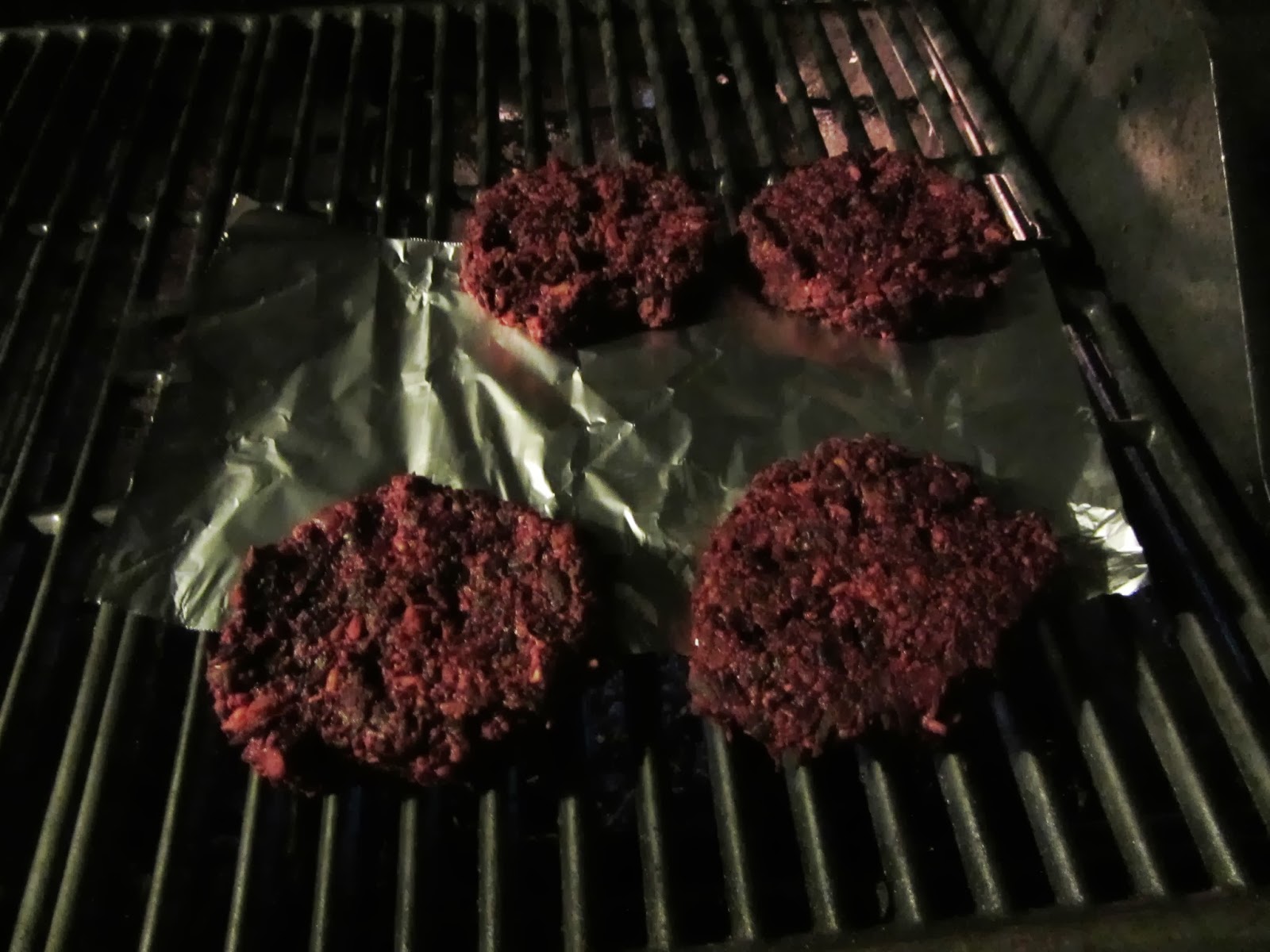When it comes to what to eat during my lunch break at an elementary school, time is at a premium. The brave might venture off campus to claim fast food options, but by the time they return to campus, they’ve only a few minutes to choke down their meal. Personally, I need time to digest. There is the option of the school’s hot lunch and though this cardboard tray alternative has improved over the years, vegetarian versions still lack appeal. So I am one of those who is happy to brown bag it, or BYOL.

 1 bunch beets, roasted, peeled, and diced (My method for roasting beets is to tuck rinsed beets into a foil packet with a few garlic cloves, salt, pepper, and olive oil and cook at 400 degrees for 45 minutes to 1 hour, until easily pierced with a fork. Then rub the beets under a stream of cool water until the skins peel off.)
1 bunch beets, roasted, peeled, and diced (My method for roasting beets is to tuck rinsed beets into a foil packet with a few garlic cloves, salt, pepper, and olive oil and cook at 400 degrees for 45 minutes to 1 hour, until easily pierced with a fork. Then rub the beets under a stream of cool water until the skins peel off.)


With an abundance of lettuce in my garden right now, a salad seems like a healthy, quick possibility most days. But managing to wash greens, make dressing and add accoutrements at 6:00 in the morning, while managing breakfast, yoga, and general grooming never quite works into the schedule. Thus I have gotten into the habit of creating some salad jars on Sunday night.
No matter what the ingredients are, here is the key, heartier veggies go on the bottom to be spooned with a homemade dressing. Rinsed and dried lettuce goes on top along with any nuts or toppings that you want to stay dry and crisp. Just give it a vigorous shake before eating and you are good to go.
Here is a beet and pear salad recipe.

 1 bunch beets, roasted, peeled, and diced (My method for roasting beets is to tuck rinsed beets into a foil packet with a few garlic cloves, salt, pepper, and olive oil and cook at 400 degrees for 45 minutes to 1 hour, until easily pierced with a fork. Then rub the beets under a stream of cool water until the skins peel off.)
1 bunch beets, roasted, peeled, and diced (My method for roasting beets is to tuck rinsed beets into a foil packet with a few garlic cloves, salt, pepper, and olive oil and cook at 400 degrees for 45 minutes to 1 hour, until easily pierced with a fork. Then rub the beets under a stream of cool water until the skins peel off.)
1 pear, skinned and finely chopped
(To keep from browning, I soak the cut pieces in lemon water for a few minutes.)
Mixed greens/ lettuce (rinsed and spun dry in a salad spinner).
Chopped pecans


Lemon and roasted garlic dressing
Grated zest of one lemon
Juice of one lemon
1 tsp Dijon mustard
2 tbsp of good olive oil
2-3 cloves of roasted garlic (mashed, I use the garlic I
roasted with the beets)
1 tsp honey (or natural sweetener)
1 pinch sea salt
1 pinch fresh thyme leaves to taste
















